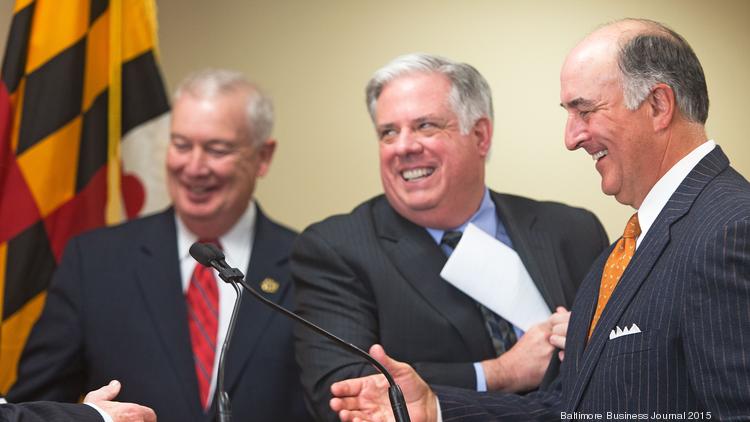The Maryland Senate has adopted a bill that provides significant tax cuts for wealthy Marylanders.
Marginal Tax Rates
Changes in marginal taxes rates for individual taxpayers:
First, there is no change in the lower rates:
2% on income of $1 through $1000
3% on income on $1001 through $2000
4% on income on $2001 through $3000
4.75% on income on $3001 through $100,000
All of the change is in the higher brackets:
Rates were previously set at 5% on income $100,001 through $125,000. The Senate bill reduces them to 4.975% in 2016, 4.95% in 2017, 4.925% in 2018, 4.90% in 2019, and 4.875% after that.
Rates were previously set at 5.25% on income $125,001 through $150,000. The Senate bill reduces them to 5.20% in 2016, 5.15% in 2017, 5.10% in 2018, 5.05% in 2019, and 5.00% after that.
Rates were previously set at 5.5% on income $150,001 through $250,000. The Senate bill reduces them to 5.45% in 2016, 5.40% in 2017, 5.35% in 2018, 5.30% in 2019, and 5.25% after that.
Rates were previously set at 5.75% on income in excess of $250,000. The Senate bill reduces them to 5.725% in 2016, 5.70% in 2017, 5.675% in 2018, 5.65% in 2019, and 5.60% after that.
Changes in marginal taxes rates for joint taxpayers are similar except that the brackets are different. Again, there is no change in the lower rates:
2% on income of $1 through $1000
3% on income on $1001 through $2000
4% on income on $2001 through $3000
4.75% on income on $3001 through $150,000
All of the change is in the higher brackets:
Rates were previously set at 5% on income $150,001 through $175,000. The Senate bill reduces them to 4.975% in 2016, 4.95% in 2017, 4.925% in 2018, 4.90% in 2019, and 4.875% after that.
Rates were previously set at 5.25% on income $175,001 through $225,000. The Senate bill reduces them to 5.20% in 2016, 5.15% in 2017, 5.10% in 2018, 5.05% in 2019, and 5.00% after that.
Rates were previously set at 5.5% on income $225,001 through $300,000. The Senate bill reduces them to 5.45% in 2016, 5.40% in 2017, 5.35% in 2018, 5.30% in 2019, and 5.25% after that.
Rates were previously set at 5.75% on income in excess of $300,000. The Senate bill reduces them to 5.725% in 2016, 5.70% in 2017, 5.675% in 2018, 5.65% in 2019, and 5.60% after that.
Impact of Marginal Tax Rate Reduction
Here is the net change in what individuals will pay at different income levels due strictly to the Senate’s proposed changes in marginal rates:

As you can see, people who earn $500K will see their taxes go down by $719, while people who earn $100K or less get no break.
Benefits to Lower and Middle Income Marylanders
No doubt its advocates will point out the the bill also increases the value of each exemption from $3200 to $3250 in 2016, $3300 in 2017, $3350 in 2018, and $3400 in 2019. Of course, wealthy people can claim these exemptions too, though they will comprise a lower share of their incomes.
More importantly, the bill will increase the Earned Income Tax Credit (EITC) to the benefit of the poorest set of working Marylanders. So poor Marylanders will pay less in taxes and even see increases in refunds if they owe no taxes.
Bad Legislation
The bill reduces the already modest level of progressive taxation in Maryland’s tax code. The largest gap in the marginal rates was only 1% between low and high income earners. That will decline to 0.85%. The difference in the overall rate (shown in the table) paid by low and high income tax payers will decline by roughly 10%.
Moreover, I don’t see why we need to give wealthy people significant tax breaks in order to increase the EITC. As the economy has picked up, the wealthy have seen the lion’s share of the benefit. Affluent Marylanders hardly need a break not only because they already have more but because they’ve gained a lot lately.
In contrast, working and middle-class Marylanders have seen their earnings stagnate or decline. The money used to give high-end tax payers a break could instead be used to augment the EITC or give a break to middle-income tax payers.
The economic rationale is poor as well. No one who earns $500K a year is going to pick up stakes and move for $700 per year. And the talk about helping the “job creators” is pure hokum. As anyone who took basic economics knows, we’re all “job creators” when we spend money whether rich or poor. Indeed, the poor likely do more to help stimulate the economy precisely because they will spend more of it to meet daily needs.
Who Opposed the Tax Cuts for the Wealthy?
Lee
Madaleno
Manno
Muse
Pinsky
Ramirez
Raskin
Rosapepe
The eight liberal legislators are all are from Montgomery and Prince George’s Counties.







